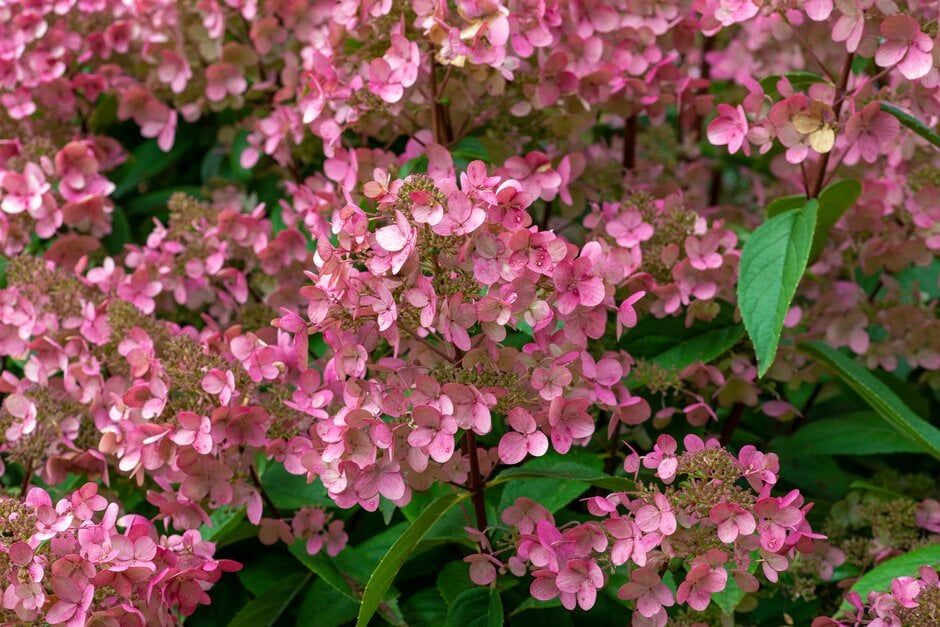Hydrangea paniculata Pinky-Winky ('Dvppinky'PBR)
panicled hydrangea [Pinky-Winky]
A sturdy, upright to slightly spreading selection with a compact habit, 140cm high and 160cm wide. Foliage is yellow-green, stems are dark purplish-red, maturing to brown. The panicle is dense, conical and tapering. Fertile floret buds are cream with pink tips. Sterile florets open lime green, then pale to white, turning deep pink at maturity. Scent is spicy
Size
Ultimate height
1–1.5 metresTime to ultimate height
5–10 yearsUltimate spread
1.5–2.5 metresGrowing conditions
Moisture
Moist but well–drained, Well–drainedpH
Acid, Alkaline, NeutralColour & scent
| Stem | Flower | Foliage | Fruit | |
| Spring | Green | |||
|---|---|---|---|---|
| Summer | Purple Red | Green White | Green | |
| Autumn | Brown | Pink White | Green | |
| Winter |
Position
- Full sun
- Partial shade
Aspect
North–facing or West–facing or South–facing or East–facing
Exposure
Exposed or Sheltered Hardiness
H5Botanical details
- Family
- Hydrangeaceae
- Native to GB / Ireland
- No
- Foliage
- Deciduous
- Habit
- Bushy
- Potentially harmful
- Skin allergen. Wear gloves and other protective equipment when handling. Pets (dogs, cats): Harmful if eaten. For further information and contact numbers regarding pets, see the HTA guide to potentially harmful plants
- Genus
Hydrangea can be deciduous or evergreen shrubs, or self-clinging climbers, with flowers in clusters usually comprising both small fertile and more showy sterile flowers; often good autumn colour
- Name status
Trade
How to grow
Cultivation
Grow in any moist but well-drained soil in partial shade or grow in sun if soil remains reliably moist. Improve chalky soils with organic matter to support good growth. See shrubby hydrangea cultivation for further advice. This plant was included in the RHS Hydrangea (paniculata) trial 2021-2025
Propagation
Propagate by softwood cuttings in early summer or hardwood cuttings in winter
Suggested planting locations and garden types
- Cottage and informal garden
- City and courtyard gardens
- Coastal
- Low Maintenance
- Flower borders and beds
Pruning
See pruning group 4 for further advice and video guide
Pests
May be susceptible to aphids, capsid bug, hydrangea scale and vine weevil
Diseases
May be susceptible to a leaf spot, powdery mildews, grey moulds (Botrytis) and honey fungus (rarely)
Hydrangea paniculata Pinky-Winky ('Dvppinky'PBR)
panicled hydrangea [Pinky-Winky]
Get involved
The Royal Horticultural Society is the UK’s leading gardening charity. We aim to enrich everyone’s life through plants, and make the UK a greener and more beautiful place.
